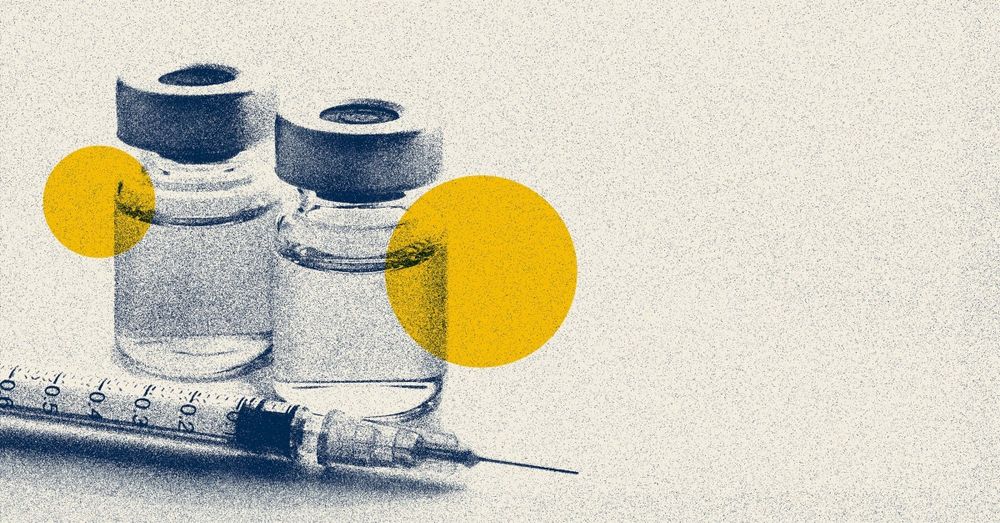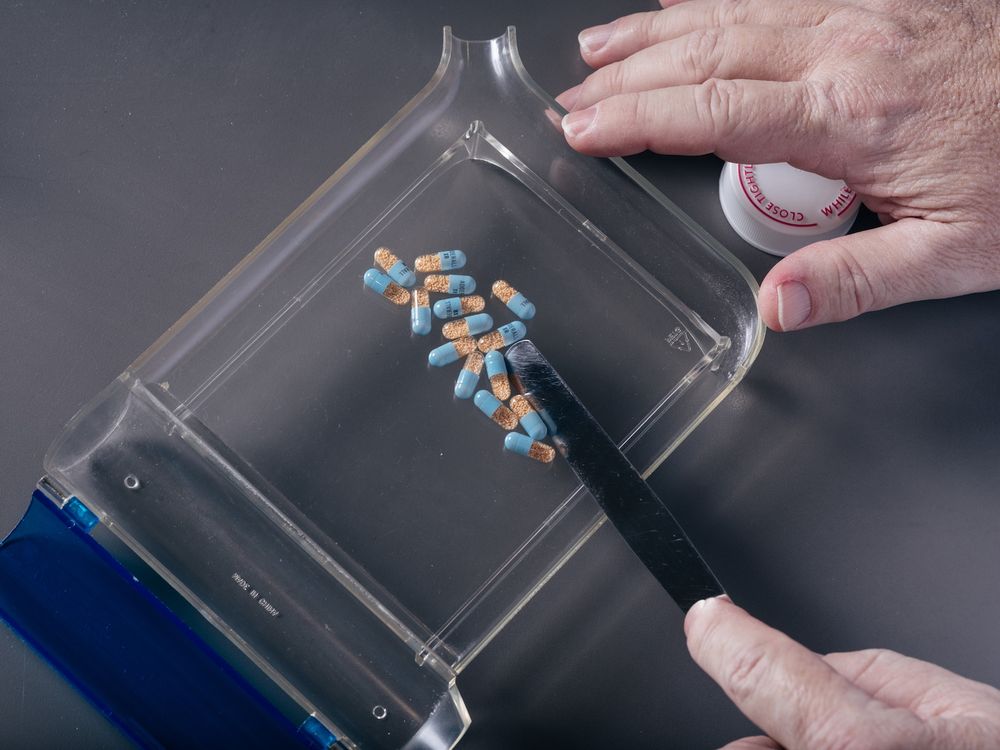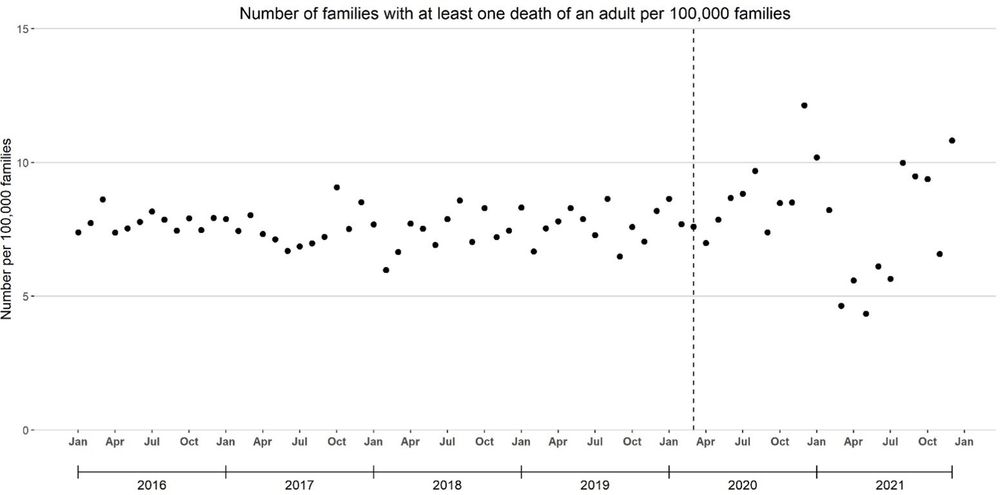
📄New from @ninahillmd.bsky.social and @kaopingchua.bsky.social.
From 2019–2023, U.S. children with chronic conditions were consistently more likely to experience food insecurity than peers without such conditions.
🔗 michmed.org/GQ3DW
@jamanetworkopen.com @um-ihpi.bsky.social
26.09.2025 17:21 — 👍 1 🔁 4 💬 0 📌 0
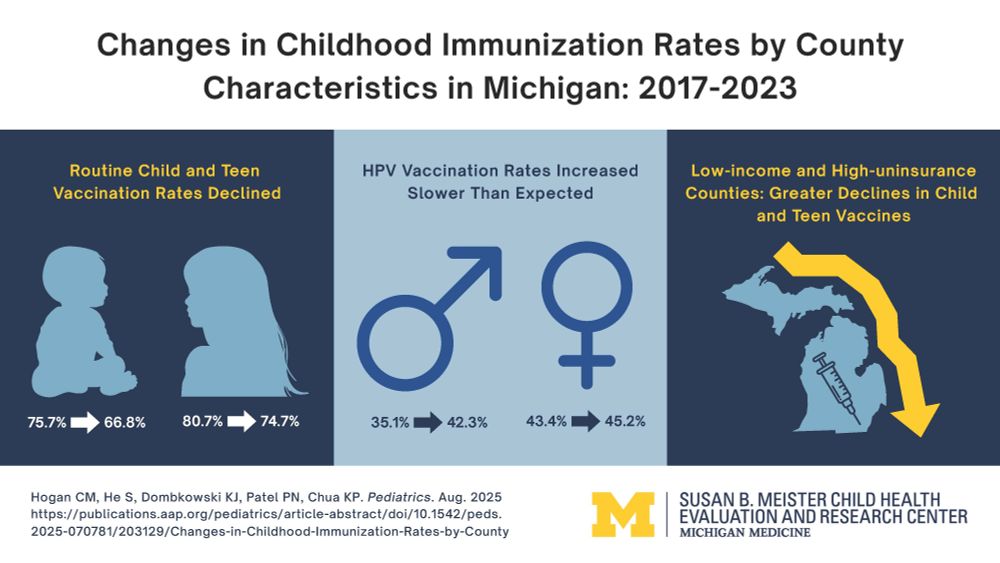
New pub in Pediatrics: child/teen vaccination declined from 2017-2023 in Michigan. HPV vaccination increased less than expected. Declines were more pronounced in low-income and high-uninsurance counties. @um-ihpi.bsky.social @umchear.bsky.social
Link:
publications.aap.org/pediatrics/a...
11.08.2025 19:22 — 👍 2 🔁 2 💬 0 📌 0
New work from our members @ninahillmd.bsky.social @kaopingchua.bsky.social
30.05.2025 22:26 — 👍 2 🔁 3 💬 0 📌 0
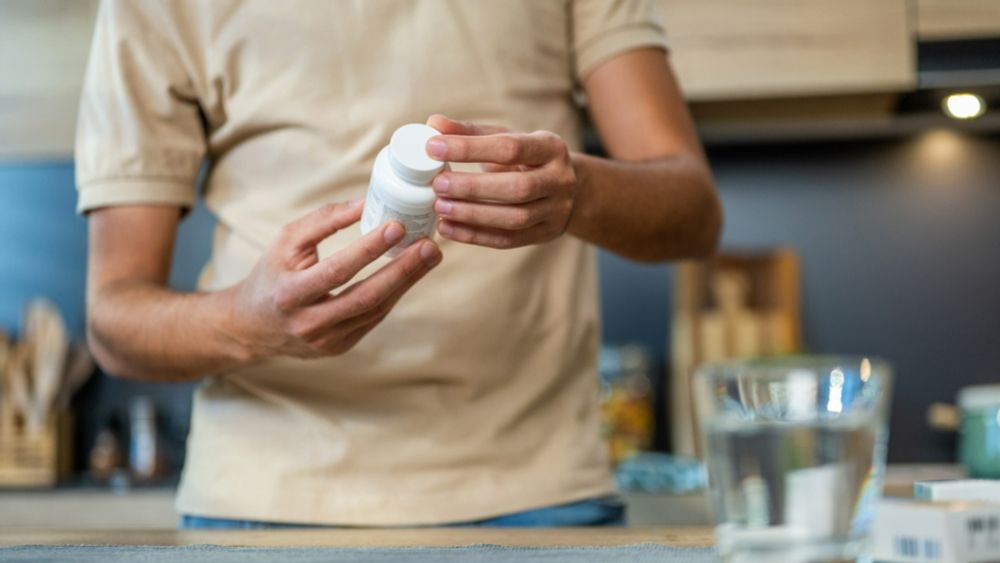
More young adults than ever take HIV-prevention medication, but gaps remain
Trends in use of pre-exposure prophylaxis, or PrEP, medication suggest more effort is needed to boost consistent use
With #HIV prevention medications (called PrEP for short) at the center of a #SCOTUS case that will receive a ruling soon, this new research from @ninahillmd.bsky.social & @kaopingchua.bsky.social is especially timely:
ihpi.umich.edu/news-events/...
27.05.2025 10:43 — 👍 1 🔁 3 💬 1 📌 0
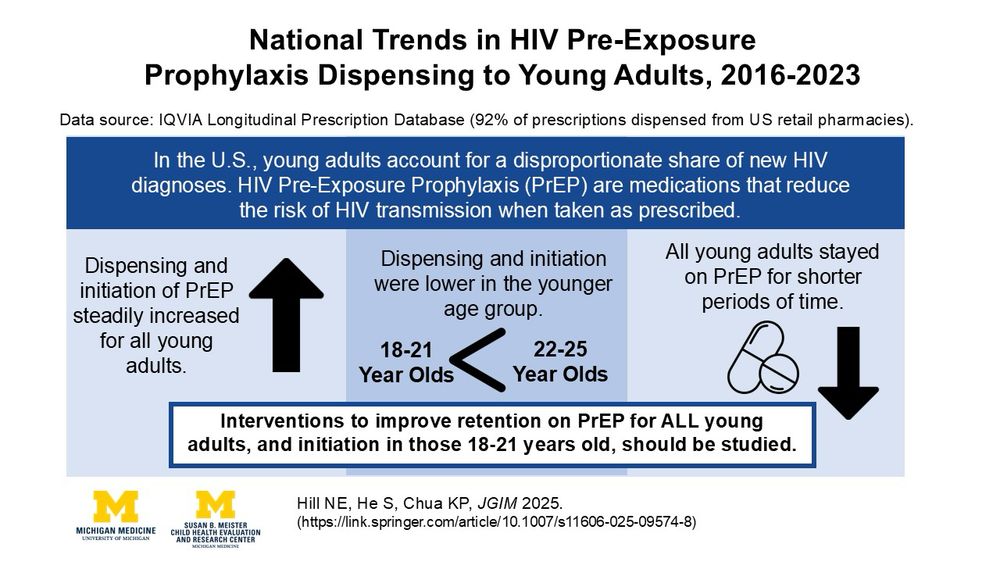
New @journalgim.bsky.social: using national pharmacy data, we show that PrEP use is increasing among young people aged 18-25, but these patients are using PrEP for shorter periods of time. @kaopingchua.bsky.social @um-ihpi.bsky.social
link.springer.com/article/10.1...
23.05.2025 17:58 — 👍 1 🔁 3 💬 0 📌 0
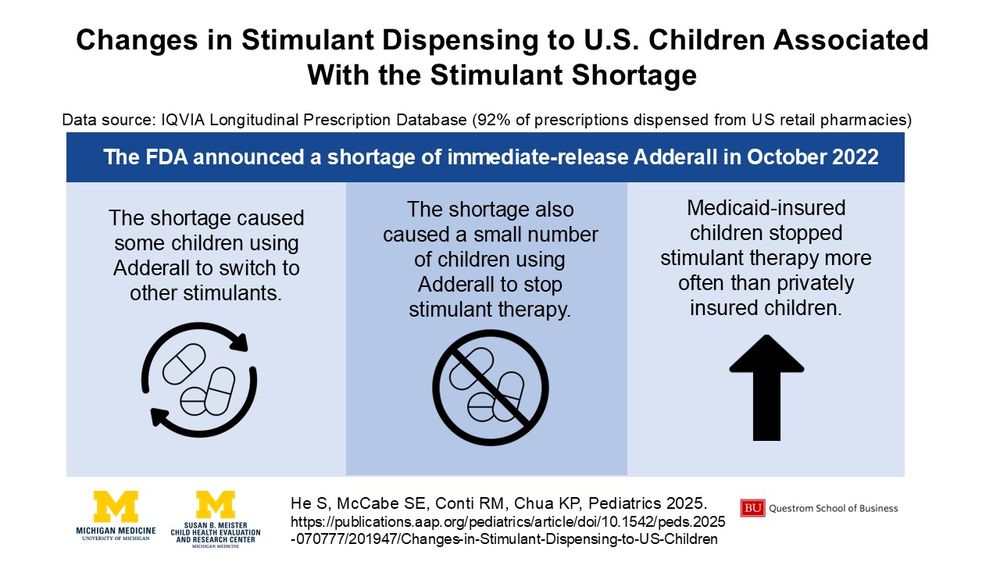
New study in Pediatrics: using national data, we show that the Adderall shortage caused some children using this drug to switch to other stimulants. Other children stopped using stimulants altogether, especially Medicaid patients. @um-ihpi.bsky.social
publications.aap.org/pediatrics/a...
21.05.2025 17:10 — 👍 4 🔁 2 💬 0 📌 0
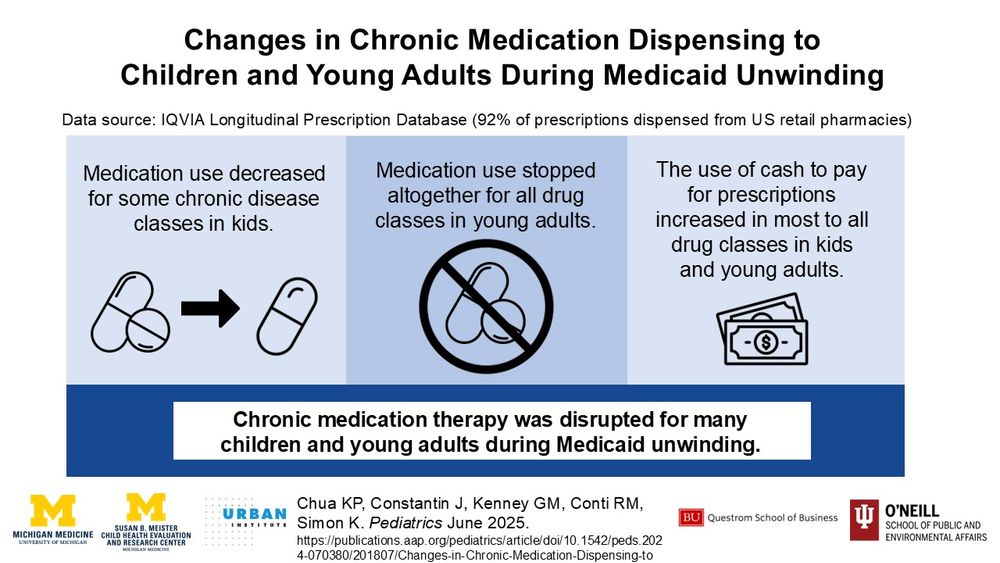
New pub: using national data, we show that disruptions in chronic medication therapy were more common among Medicaid-insured kids and young adults living in states experiencing large Medicaid enrollment losses during Medicaid unwinding. @um-ihpi.bsky.social
publications.aap.org/pediatrics/a...
02.05.2025 20:35 — 👍 3 🔁 1 💬 0 📌 0
🧵By total coincidence, @kaopingchua.bsky.social & @jo-constantin.bsky.social have not one but TWO papers out today looking at the impacts of #Medicaid unwinding on the prescription-filling patterns of people with serious illness.
The findings could have implications for any new changes to Medicaid.
02.05.2025 15:19 — 👍 1 🔁 1 💬 1 📌 1

Medicaid unwinding disrupted kids’ and young adults’ access to chronic disease medicine
Prescriptions for mental and behavioral health, epilepsy and asthma affected among those living in states with largest drops in Medicaid enrollment
Children and young adults taking drugs for #ADHD, #depression, #epilepsy, #asthma and #psychosis need to take them consistently to stay on track at school and work.
But a new study led by @kaopingchua.bsky.social links #Medicaid unwinding to medicine interruptions:
ihpi.umich.edu/news-events/...
02.05.2025 14:13 — 👍 2 🔁 2 💬 0 📌 0

New pub in JAMA: withdrawal of brand-name Flovent, an inhaled steroid used to prevent asthma attacks, led many families of children using Flovent to stop filling inhaled steroid prescriptions altogether. @um-ihpi.bsky.social
jamanetwork.com/journals/jam...
27.04.2025 17:56 — 👍 1 🔁 2 💬 0 📌 0
Yes, it is an important paper.
26.04.2025 15:54 — 👍 0 🔁 0 💬 0 📌 0
CHEAR | Susan B. Meister Child Health Evaluation and Research Center
The Susan B. Meister Child Health Evaluation and Research (CHEAR) Center at the University of Michigan is one of the largest health services research centers that focuses on children. Our work is mult...
Today, I became the new Director of the Susan B Meister Child Health Evaluation and Research Center at the University of Michigan (chear.org). I am lucky to have the opportunity to give back to the center that has meant so much for my career. @um-ihpi.bsky.social
15.04.2025 19:46 — 👍 2 🔁 0 💬 0 📌 1
4/ Congrats to first author Joanne Constantin for this study.
06.03.2025 19:49 — 👍 0 🔁 0 💬 0 📌 0
3/ This is one of the first studies to evaluate the safety of telehealth stimulant prescribing. We hope it will inform ongoing debates about whether to extend telehealth flexibilities for controlled substance prescribing.
06.03.2025 19:49 — 👍 0 🔁 0 💬 1 📌 0
2/ In subgroup analyses, telehealth initiation was associated with higher risk of SUD in 26-34 year old even when controlling for mental health conditions. Thus, while telehealth initiation is not an independent risk factor for SUD in most people, it may be for this age group.
06.03.2025 19:49 — 👍 0 🔁 0 💬 1 📌 0
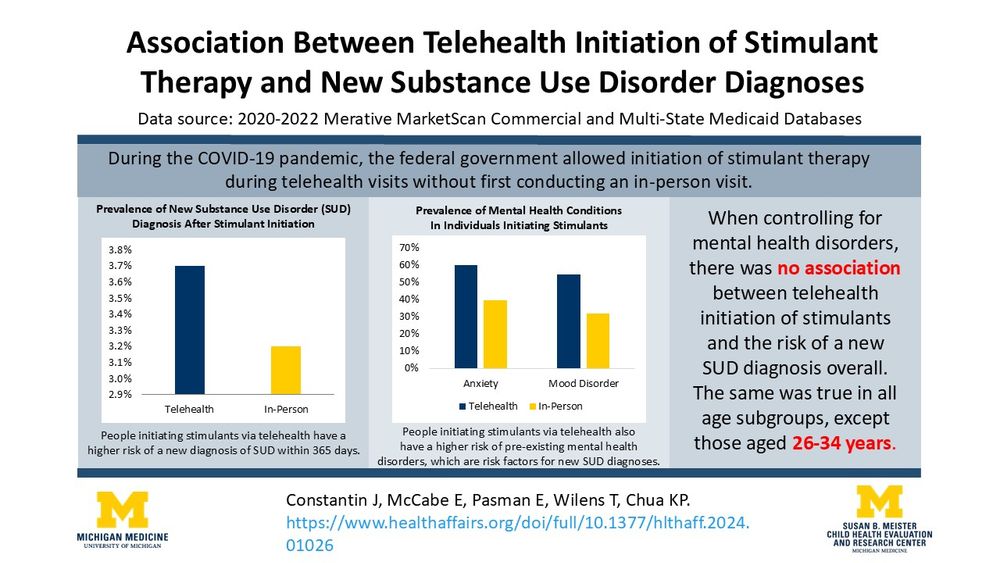
1/ New pub: people initiating stimulants via telehealth are more likely to develop a substance use disorder (SUD). They are also more likely to have mental health conditions (SUD risk factors). When controlling for these conditions, the association goes away. www.healthaffairs.org/doi/full/10....
06.03.2025 19:49 — 👍 2 🔁 0 💬 1 📌 0
8/ Thanks to my center (Susan B. Meister Child Health Evaluation and Research Center; chear.org) for supporting our work.
27.01.2025 19:42 — 👍 0 🔁 0 💬 0 📌 0
7/ Findings suggest the shortage did not cause many children to stop stimulant therapy but may have prompted some to switch to alternative stimulants. Studies should evaluate whether these switches worsened control of ADHD symptoms or increased adverse events (e.g., from dosing errors).
27.01.2025 19:42 — 👍 0 🔁 0 💬 1 📌 0
6/ However, the announcement was associated with shifts in which stimulants were dispensed to children. Specifically, it was associated with declines in Adderall IR dispensing and increases in dispensing of other stimulants, such as lisdexamfetamine.
27.01.2025 19:42 — 👍 0 🔁 0 💬 1 📌 0
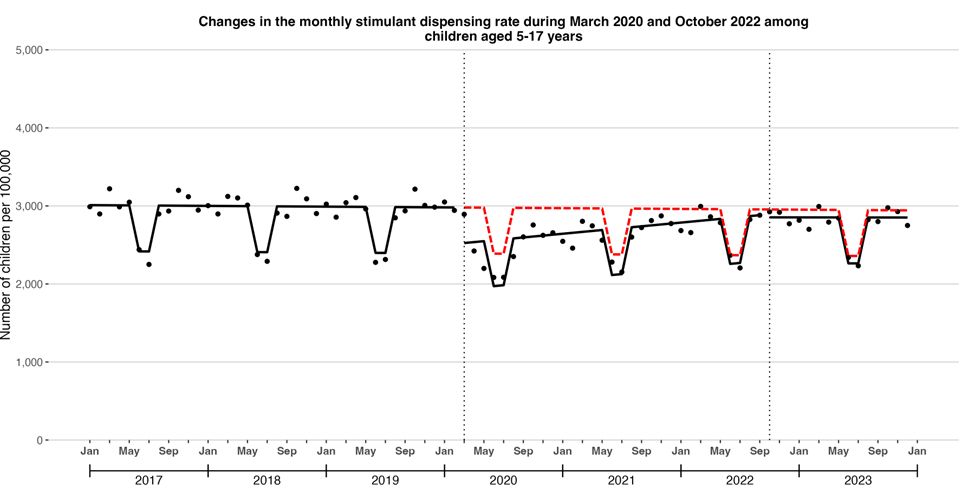
5/ The FDA announced a shortage of immediate-release mixed amphetamine salts (Adderall IR) in October 2022 (right vertical line). This announcement was not associated with a significant immediate change in the rate of dispensing of *any stimulant* to children.
27.01.2025 19:42 — 👍 0 🔁 0 💬 1 📌 0
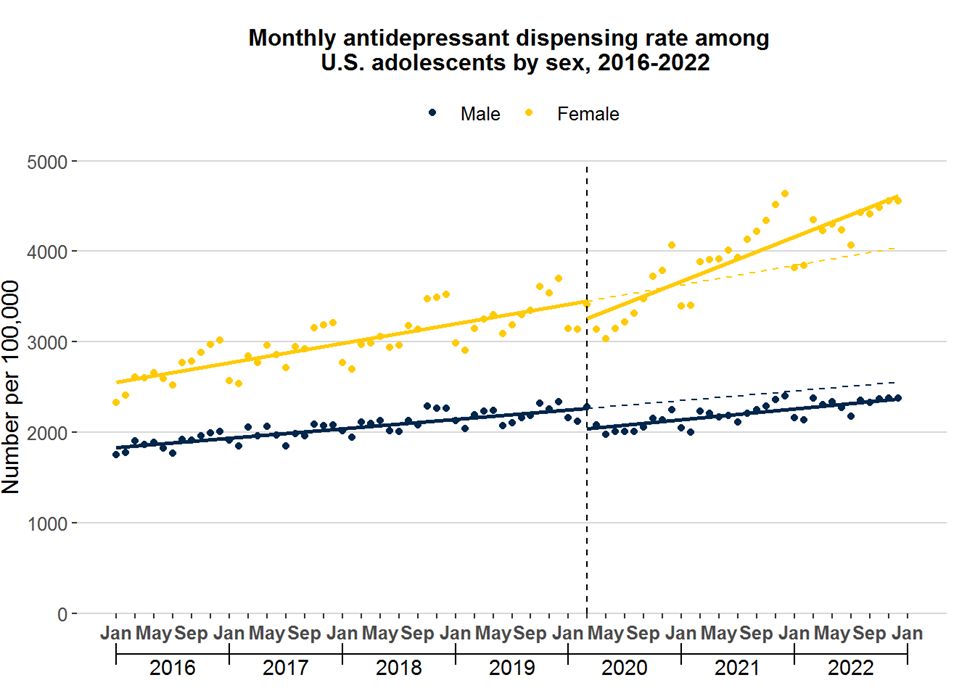
4/ This is consistent with our study showing that antidepressant dispensing to male adolescents dropped abruptly in March 2020 but did not recover. Our findings raise concerns that undertreatment of mental health conditions in this group has increased.
publications.aap.org/pediatrics/a...
27.01.2025 19:42 — 👍 0 🔁 0 💬 1 📌 0
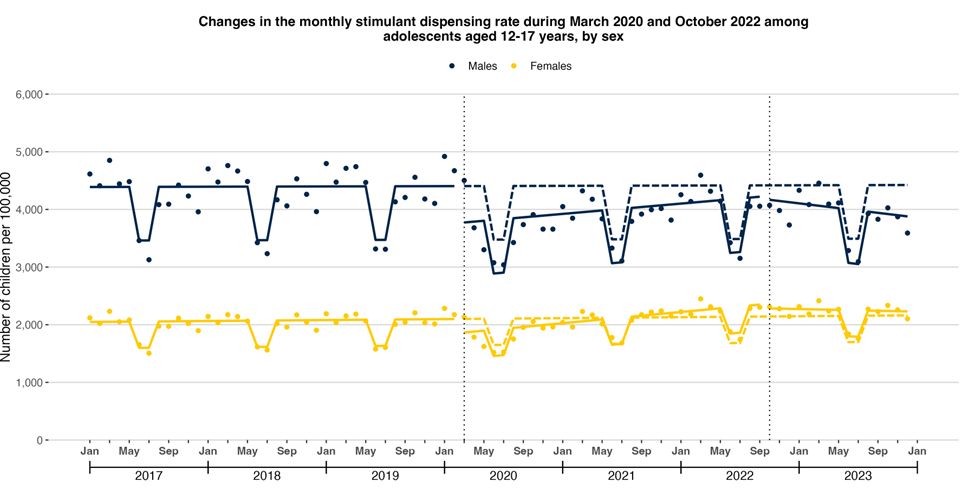
3/ While the stimulant dispensing rate recovered after March 2020 in most child subgroups, it remained persistently below the pre-pandemic baseline in male adolescents aged 12-17 years (blue line in graph below).
27.01.2025 19:42 — 👍 0 🔁 0 💬 1 📌 0

2/ We analyzed 2017-2023 data from a national all-payer prescription dispensing database. After March 2020 (left vertical line in the graph), the monthly stimulant dispensing rate decreased abruptly among all children.
27.01.2025 19:42 — 👍 0 🔁 0 💬 1 📌 0
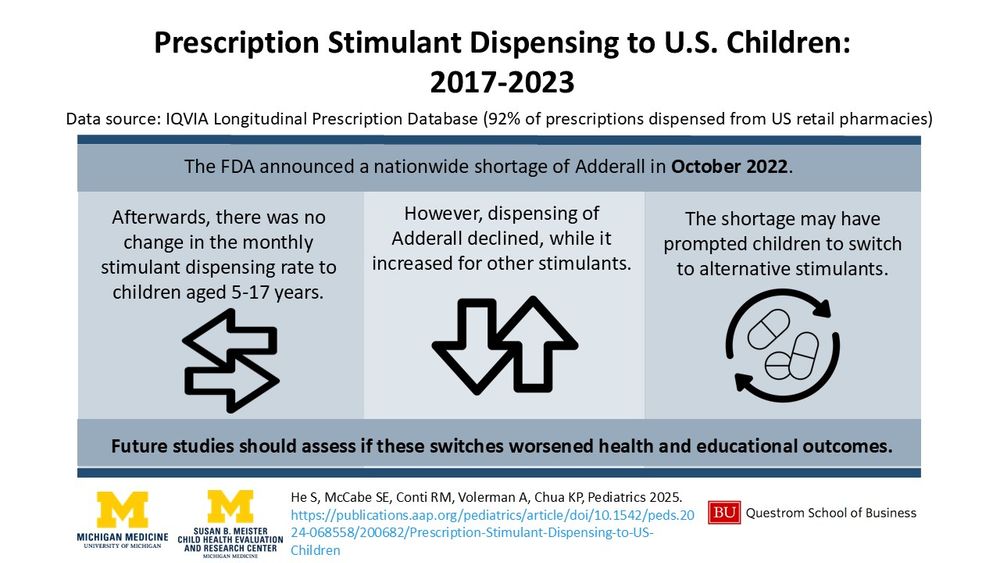
1/ New pub in Pediatrics: the stimulant dispensing rate to U.S. children declined after the pandemic began. The Adderall shortage didn’t change this rate but likely caused children using Adderall to switch to other stimulants.
publications.aap.org/pediatrics/a...
27.01.2025 19:42 — 👍 0 🔁 0 💬 1 📌 0
Philosopher w/ focus on disease causation (esp. clusters). I completed Mark Purdey’s research project by identifying the true environmental causes (oil pollution, pesticides, mercury, & mycotoxins) of “Huntington’s Disease” at Lake Maracaibo.
Joyce Lee, MD, MPH ACMIO @umichmedicine #tableau #hit #healthdesign #ai #systemsdesign #learninghealthsystems https://www.doctorasdesigner.com/bio
Perinatal epidemiologist. Chief Scientific Officer, Vermont Oxford Network. Research Professor, University of Vermont. Fan of public health, penguins, and Fulham Football Club. Up the Green! Views=my own.
Uniting & serving 760+ faculty from all areas of @umich.edu who do health services research and study #healthcare and #healthpolicy. NCSP training site.
Visit ihpi.umich.edu to search for an expert, see our members' work & sign up for our newsletter
#medpeds primary care doc & health services researcher working to improve #foodinsecurity and ❤️ health across the lifespan | currently @ncspmichigan @umchear
U.S. Senator from the great state of Michigan. Working to boost the middle class, protect our country, our kids and our democracy. Former national security official.
The Youth Policy Lab, a joint research center of the Gerald R. Ford School of Public Policy and the Institute for Social Research, envisions a world where partner-driven and policy-centered research fuels positive social change.
U.S. Senator proudly representing the State of Michigan. 🏍️
All things Ann Arbor—culture, community, news, and events—in this monthly magazine and every day
Official account of Destination Ann Arbor | Tag us with #AnnArbor | annarbor.org
Grumpy townie since 1983. Sometimes parody is indistinguishable from reality. DM your pitches to pitchbot AT theinternetemail DOT com. they/them
The official account of the University of Michigan. #GoBlue #LeadersAndBest
Official Bluesky account for CBS News Detroit
Your home for the latest local news, weather, and the best of Detroit.
CBSDetroit.com
Assistant Professor of Health Policy and Politics at @hsph.harvard.edu
I study how administrative burdens impede health insurance coverage, strategies to reduce these barriers, and the politics of health reform
she/her/Michigander
Health Economist. Associate Professor & Vice Chair for Research and Practice. Director, Center for Mental Health and Addiction Policy. Department of Health Policy and Management. Johns Hopkins University.
Econ professor at Michigan ● Senior fellow, Brookings and PIIE ● Intro econ textbook author ● Think Like An Economist podcast ● An economist willing to admit that the glass really is half full.
Health services researcher, primary care doctor, and writer | Associate Professor @HarvardMed @BrighamDGIM via @MassGeneral @BostonGlobe | Associate Editor @JAMAInternalMed
health policy researcher, primary care physician, dad
SVP, Performance Measurement & Improvement, BCBSMA. Recovering health services researcher. General internist.
https://scholar.google.com/citations?user=0NoSeEUAAAAJ










